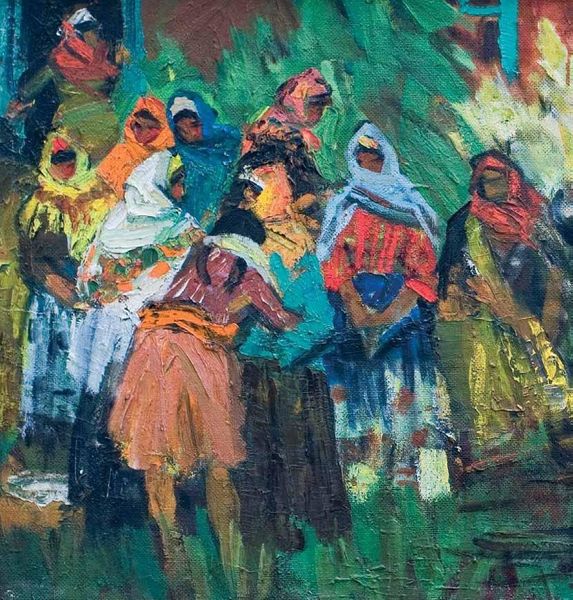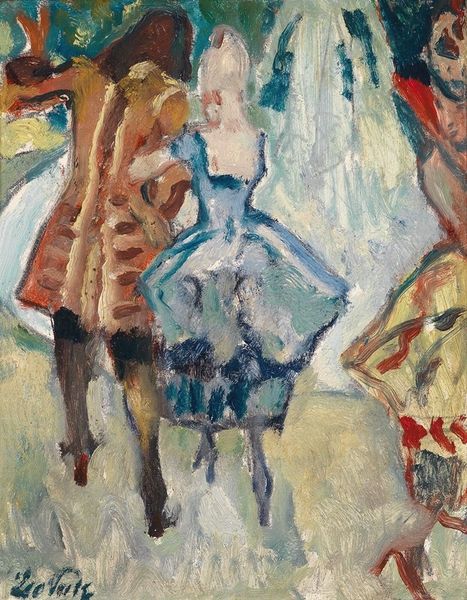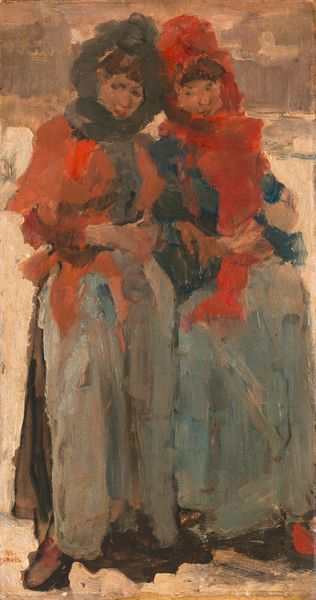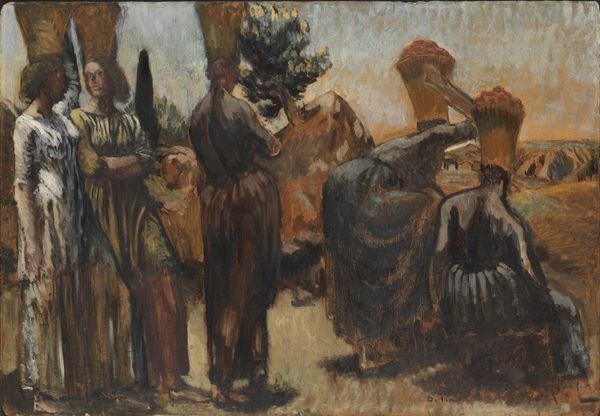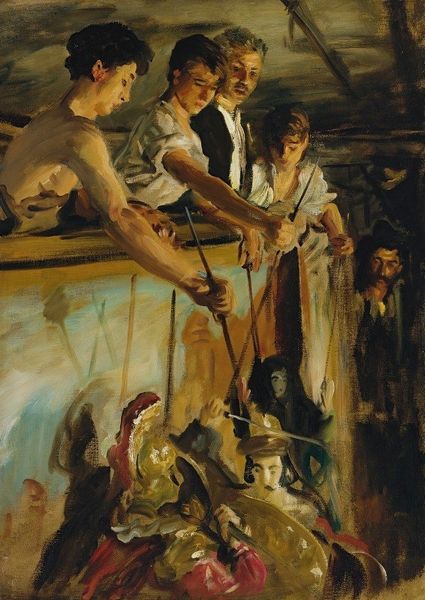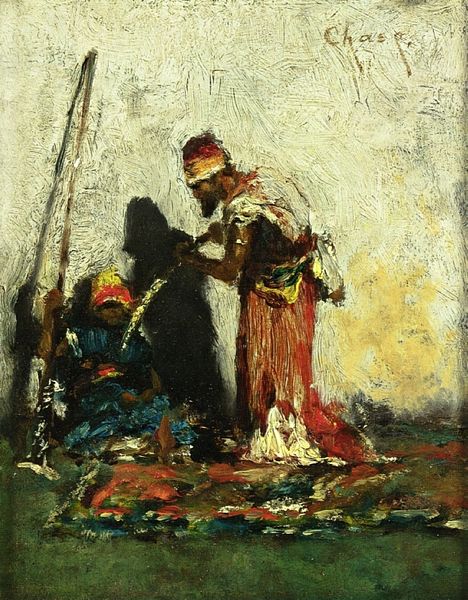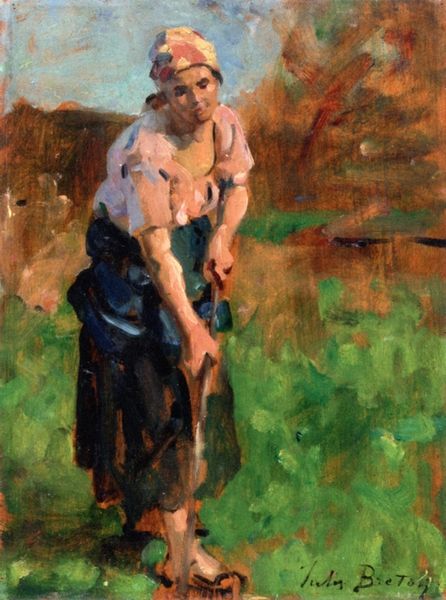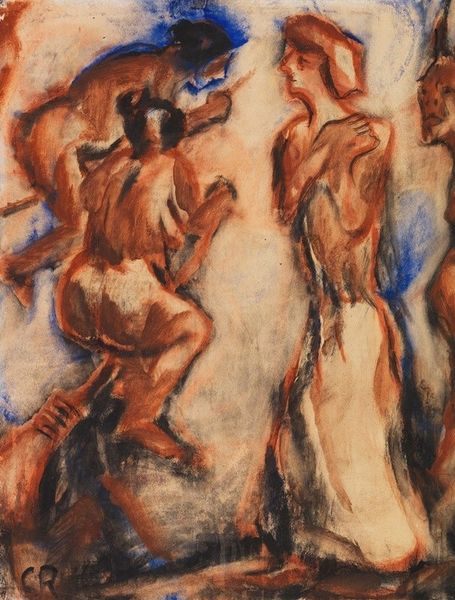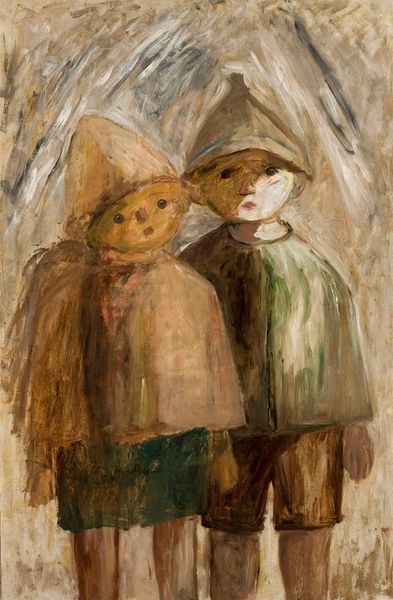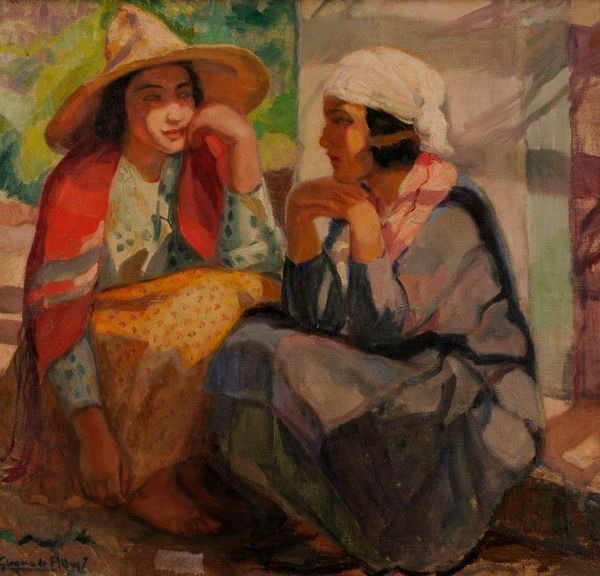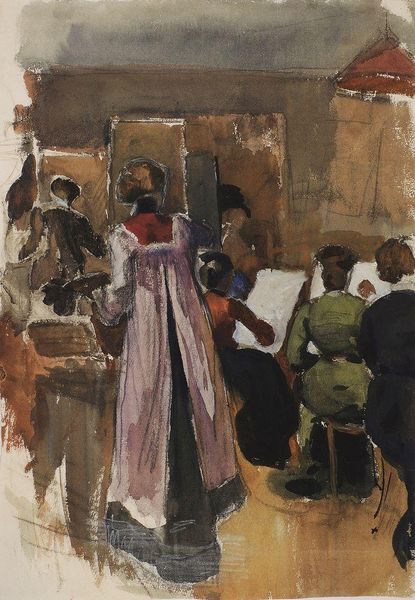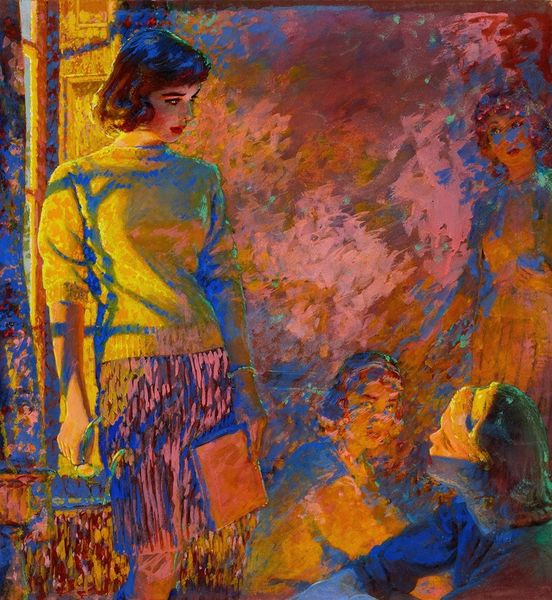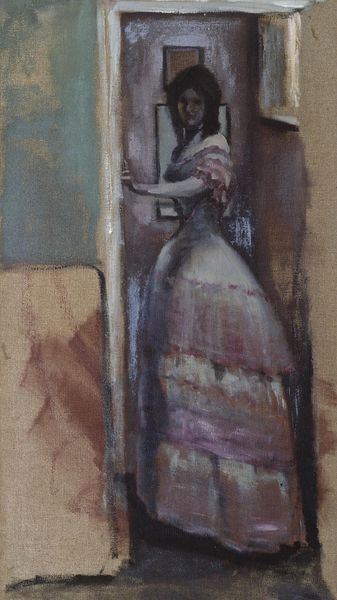
Dimensions: 52.07 x 34.29 cm
Copyright: Public domain
Curator: Sargent's "Bedouin Women Carrying Water Jars," painted around 1891, captivates with its blend of plein-air Impressionism and Orientalist themes, using oil and possibly other media. It offers a snapshot of daily life in a context romanticized by many Western artists. Editor: Immediately, I'm struck by the visual weight—both literal, considering the subject matter, and the painted mass of figures laboring in what seems like unrelenting light. Curator: Yes, the palpable heat almost radiates off the canvas. It's a testament to Sargent's skill, capturing this essence en plein air, emphasizing immediacy. Note the impasto of the pigment and brushwork used to define the figures. It reminds one of his focus on craft. Editor: That 'immediacy' also strikes me as carefully constructed, shaped by existing colonial narratives of the time. I can't help but consider how Sargent, an outsider, translated the labor of these women into an exotic spectacle for a Western audience, while not questioning this daily burden that surely reflected socio-economic and gendered disparities. Curator: Perhaps, but the brushstrokes themselves, so quick and decisive, tell their own story of the labor involved in painting it. It reflects both the women in the picture, and the artist behind it. I am interested in understanding that in bringing together materials from various contexts to form something both lasting and beautiful. Editor: Agreed, understanding both sides is crucial. This artwork invites discussions about exploitation, cultural representation, the burden placed on women in some societies, and how art may contribute to problematic exoticization, consciously or unconsciously, particularly through selective highlighting. Curator: Ultimately, a piece like this highlights the enduring complexities and challenges of intercultural depiction, forcing us to ask vital questions about labor, materiality, representation, and artistic responsibility within broader historical and political structures. Editor: Yes, it's more than just brushstrokes; it's a loaded gaze. And these women's actions call for deep interrogation.
Comments
No comments
Be the first to comment and join the conversation on the ultimate creative platform.
